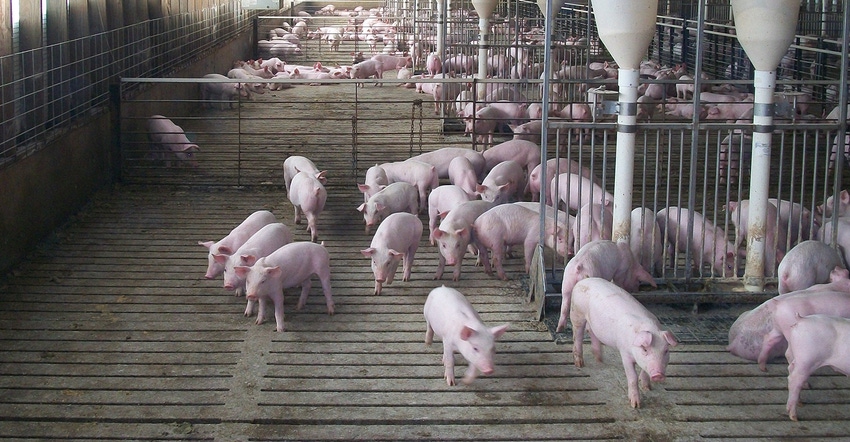October 22, 2018

The fall color may still be evident, but it’s not too soon to prepare your swine barns for the cold weather.
To help ensure sure your pigs and workers have a good environment throughout winter — without high fossil fuel costs — follow these suggestions by Larry Jacobson, emeritus Extension engineer with the University of Minnesota.
Keep barns tight
It’s essential to keep mechanically ventilated barns and curtain barns tight. Make sure a slight vacuum or static pressure exists in the barn when only the continuous running exhaust fans are on. A general target for static pressure is 0.05 inches of water when measured with a manometer.
Every pig barn or room needs a manometer to monitor static pressure in the barn. The very minimum static pressure is 0.02 inches of water when your minimum or continuous running fan is operating. If you can’t maintain a slight vacuum or static pressure in your barn, you won’t be able to control the air exchange and quality in the barn.
Static pressure in curtain barns
Adjusting sidewall curtains naturally ventilates curtain barns in warm weather. During the winter, you should close and seal these curtains as tight as possible. Usually, if there’s enough exhaust fan capacity (e.g. 50 cfm per pig in finishing barns), you can physically seal the curtains. This may include nailing them shut or using another permanent sealing method. With this exhaust fan capacity, there’s also enough ventilation to control inside temperature rises during warm winter days.
Static pressure in mechanically ventilated barns
Shutters or louvers of large summer operating fans are the most common leak sources in regular tunnel or other year-round mechanically ventilated swine barns. We recommend sealing louvers on large fans that only run in warm weather. Sealing with insulated panels or heavy plastic will prevent air from flowing back through these fans. Make sure to seal other building leaks (around doors and windows) to prevent these openings from allowing air to enter the barn.
Check inlets
After making your barn tight, make sure air enters the barn or room where it’s designed to, usually through ceiling inlets. To allow air to enter the room through the gravity or actuator-controlled inlets, the inlets need to:
• be operating properly
• not be stuck
• not have excessive dirt
If the inlets take air from the attic, you must have a sufficient number of attic openings to feed air to the ceiling inlets. Typically, these attic openings are eave inlets. During winter, it’s recommended that you leave only one side (the south side, if barns runs east and west) open. This will allow enough inlet opening to feed the barn’s winter air exchange and prevent snow “blow-through” in the attic during snowstorms.
You may use other attic openings such as gale-end louvers or ridge vents to supply air for the ceiling inlets.
The same guidelines for supplying inlet air apply to a tempered or headed hallway in farrowing or nursery barns.
Check winter fans, heaters and ventilation components
Clean fan shutters to increase fan efficiencies and make sure airflow rates keep good air quality inside the barn. Dirty or rusted, restricted shutters can reduce airflow capacity of a direct drive fan by 40%. If you have large belt-driven fans operating in the winter, make sure belts are properly tight, or airflow rates may decline up to 50% or more.
Clean and adjust gas-fired heaters so there’s a proper mixture of fuel and air. Heated air from any heater, electric or gas-fired, needs to spread throughout the room to reduce differences in room temperature.
Make sure that the temperature controller or thermostat for the heater offset (temperature when heater shuts off and next stage exhaust fan turns on) is at least 2 degrees F. This 2-degree-F difference will typically prevent heater overshoot.
Heater overshoot is when the spike in room temperature from the heater operating triggers the next thermostatically controlled exhaust fan to turn on. This can be expensive. since large amounts of heated air will go to waste if the heaters and large second-stage fans cycle. Overshoot also results in wide temperature swings that are harmful to pig growth and health.
Source: U-M Extension
You May Also Like




